Among the largest flying insects in the world, the Atlas moth is a true natural marvel. With an astonishing wingspan of up to 24 centimeters (nearly 10 inches), this moth often gets mistaken for a bird at first glance. Though technically a moth and not a butterfly, the Atlas moth’s size and beauty easily earn it a place in the spotlight. Its wings are not just large—they’re ornate, with rich shades of brown, rust, orange, and black forming intricate patterns. But what really sets this moth apart is what’s lurking at the very tip of its wings.
The Snake Illusion That Saves Its Life
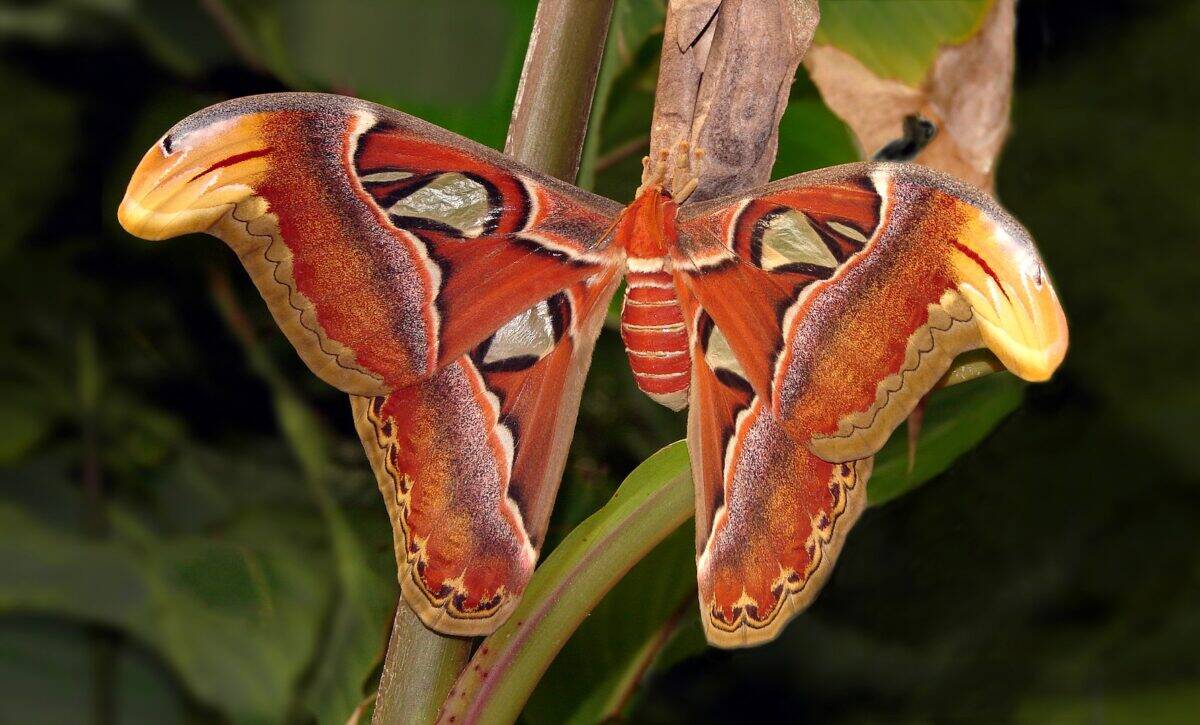
If you look closely at the wingtips of the Atlas moth, you’ll notice something uncanny: they look like the heads of venomous snakes. This is not just a coincidence of coloration. The patterns, shapes, and even the subtle curves of the wings resemble a coiled snake’s head, complete with what appear to be eyes and scales. When threatened, the moth can flick its wings in a way that mimics the defensive movements of a snake. For predators looking for an easy meal, this deceptive display is usually enough to make them back off.
A Life Without Eating
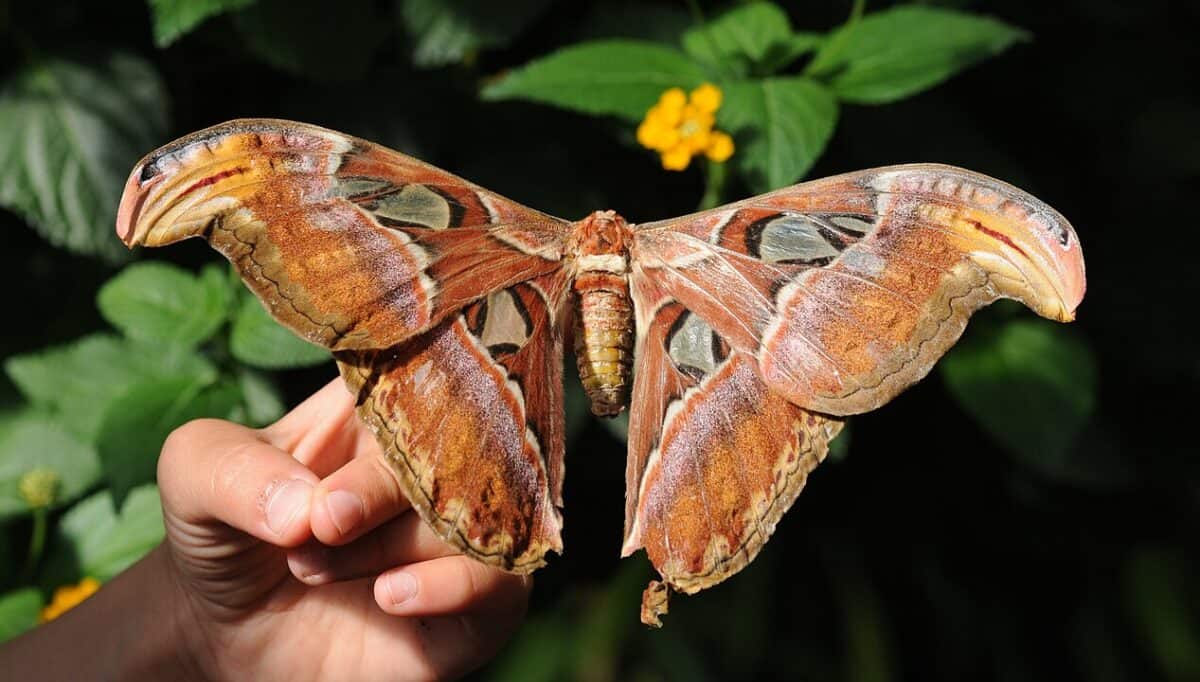
The adult Atlas moth is all about drama—from its size to its survival strategy—but its lifestyle is even more fascinating. Once it emerges from its cocoon, the moth doesn’t eat. In fact, it doesn’t even have a mouth. All the energy it needs to survive comes from food stored during its caterpillar stage. As a caterpillar, it consumes large amounts of leaves, building up reserves to sustain it for its short adult life, which typically lasts only one to two weeks. Its sole purpose during that time is to mate and lay eggs, continuing the life cycle of this remarkable species.
Deep Roots in Southeast Asia
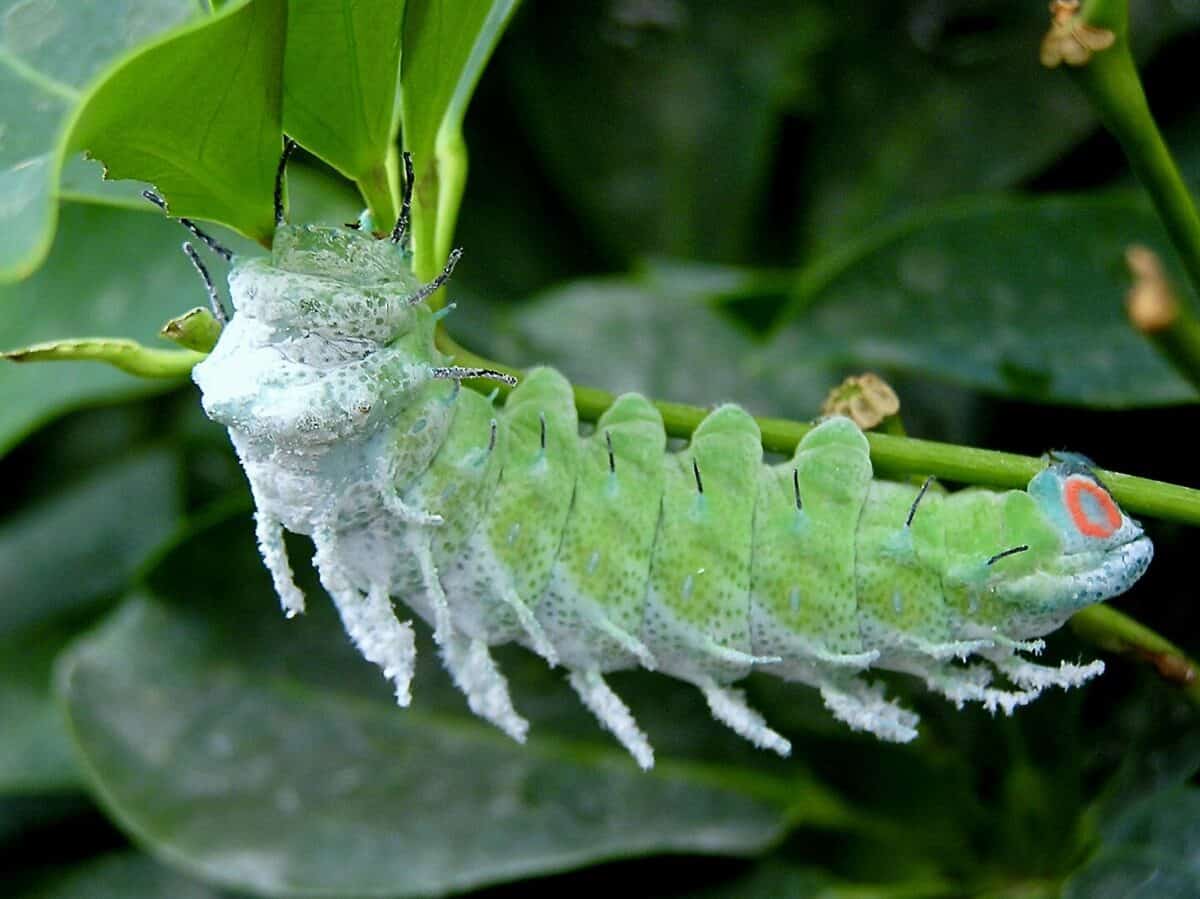
The Atlas moth is native to the tropical and subtropical forests of Southeast Asia, including countries like India, Indonesia, and the Philippines. In these regions, the moth has long been a part of the ecosystem, adapting over time to survive among an array of predators. Interestingly, in places like Hong Kong, it’s affectionately known as the “snake’s head moth” due to its unique wingtip mimicry. These forests offer the dense foliage and quiet shelter necessary for the moth to develop, transform, and thrive in relative secrecy.
Nature’s Master of Camouflage
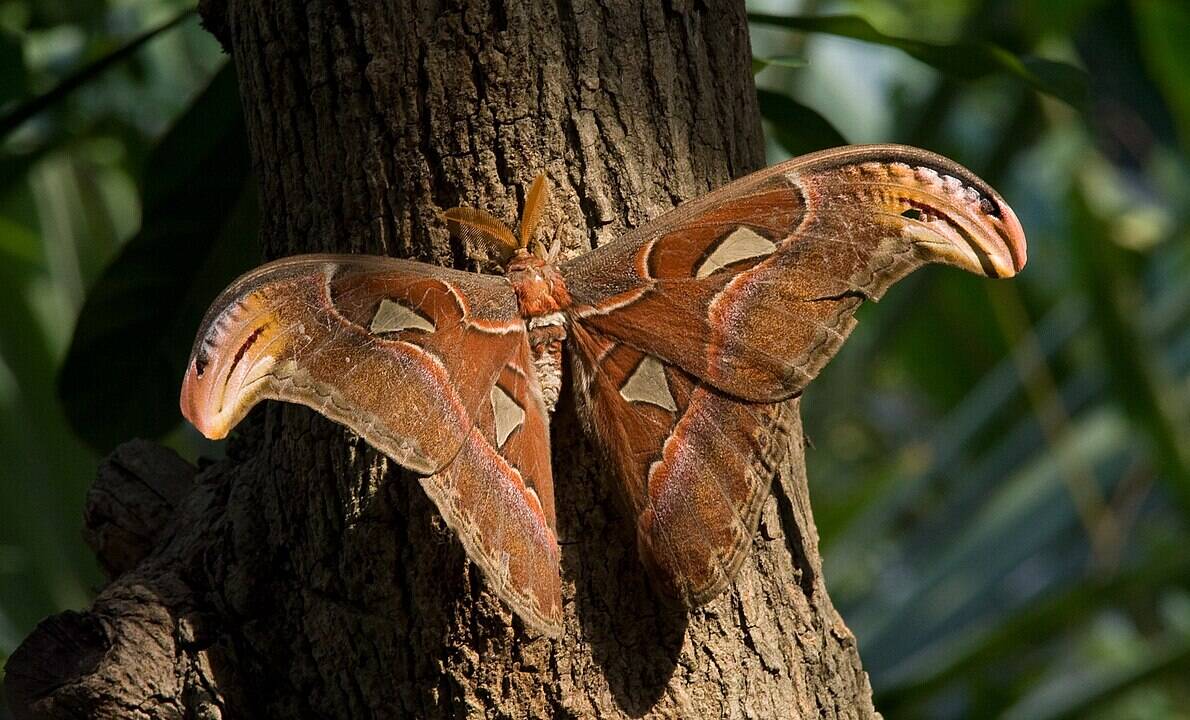
Camouflage in the animal kingdom is a well-known survival tactic, but the Atlas moth takes it to an entirely new level. While many insects blend in with leaves or bark, this moth’s strategy is active mimicry—pretending to be something dangerous. The snake-like illusion isn’t just for show. When disturbed, the moth flutters its wings to simulate the threatening jerks of a snake about to strike. It’s a bluff, of course, but a highly convincing one. This level of mimicry is rare and showcases just how fine-tuned evolution can be when survival is on the line.
More Than Just a Moth

Beyond its biological brilliance, the Atlas moth holds a special place in local cultures. In certain communities, the moth’s silk is harvested and used to make durable items such as small purses. Unlike regular silk, which requires boiling the cocoon and killing the pupa, the Atlas moth’s silk can be collected without harm once the moth emerges. This makes it a sustainable and respectful way of interacting with nature’s resources. The moth’s dramatic appearance also makes it a favorite subject of folklore and curiosity, often appearing in local stories and nature exhibitions.
A Viral Sensation and Symbol of Survival
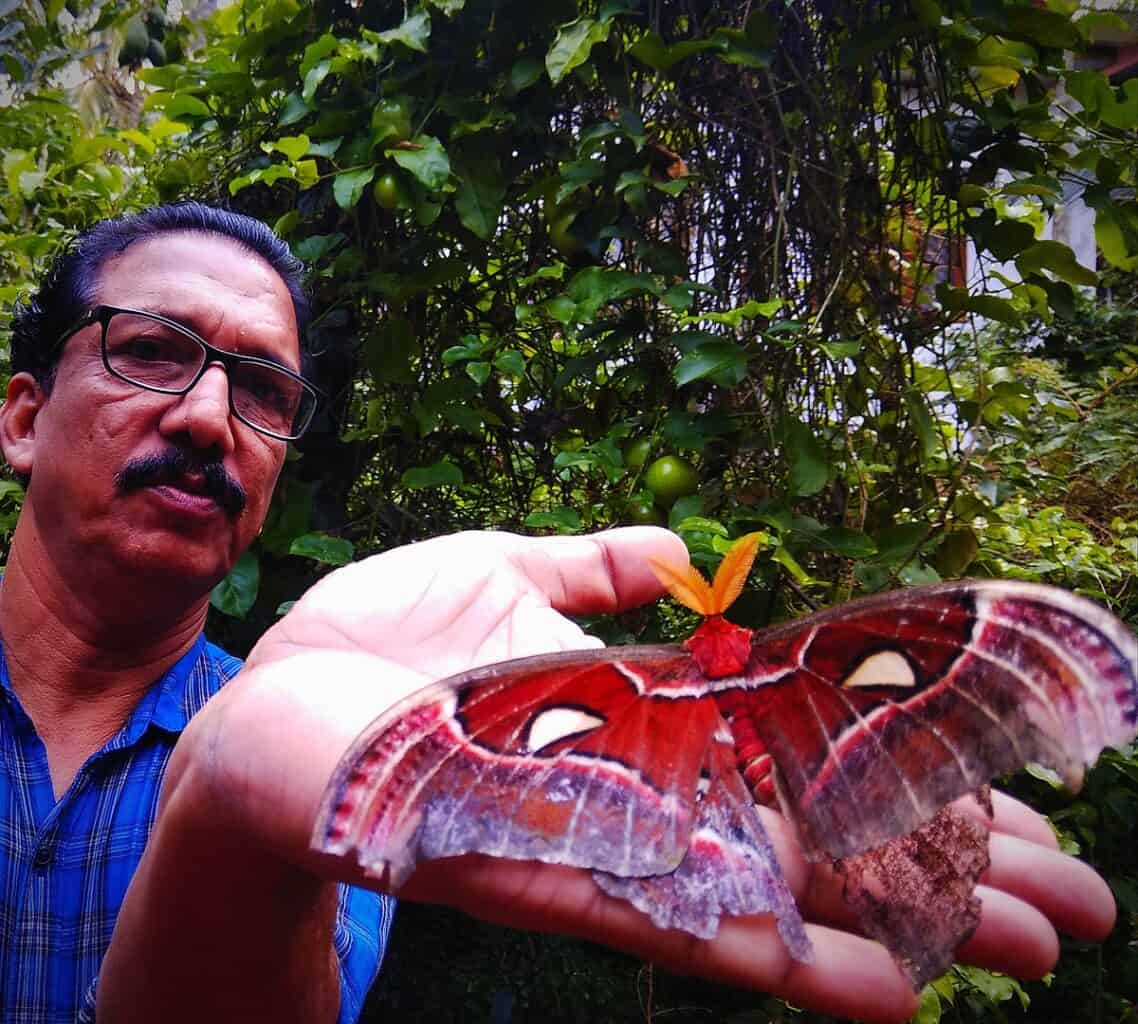
Videos and photos of the Atlas moth have gone viral in recent years, stunning internet users with its almost alien-like appearance. Its resemblance to a snake has captivated millions, sparking curiosity about the many ways nature defends its creations. This fascination isn’t just about appearance—it’s a reflection of how incredible survival strategies can evolve in the most unexpected ways. In a world where predators are quick and brutal, the Atlas moth’s theatrical defense is a silent, fluttering triumph of illusion.
Conclusion
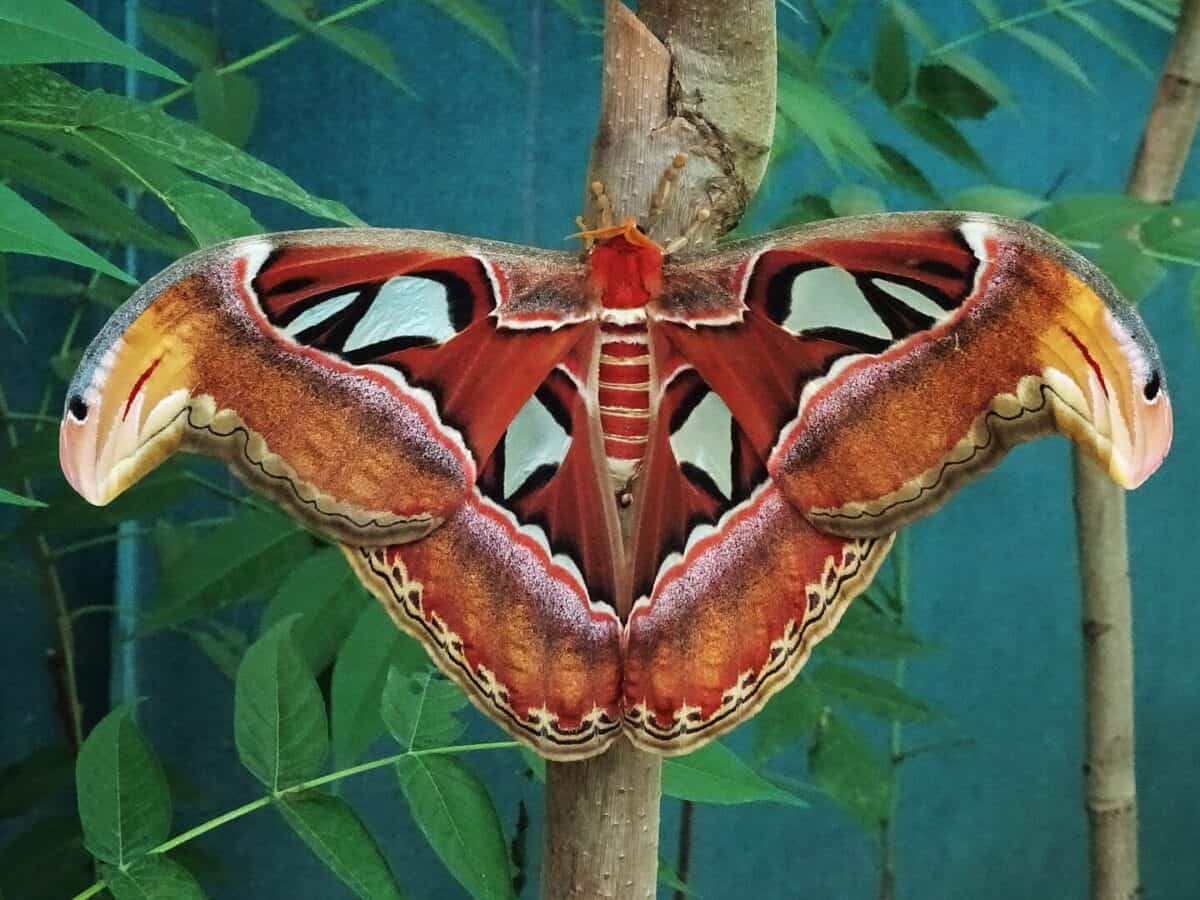
The Atlas moth reminds us that the natural world still holds secrets more astonishing than fiction. From its record-breaking size to its uncanny disguise, this moth is more than just a pretty pair of wings—it’s a living lesson in adaptation, survival, and beauty. Whether you’re a casual nature lover or a seasoned entomologist, encountering an Atlas moth, even through a screen, is a moment to marvel at the genius of evolution.
- Dog Groomer Transforms Canines into Colourful Creatures - August 18, 2025
- These Are the Animals that Would Most Likely Survive Climate Change - August 18, 2025
- In 2012, French Bees Turned Honey Blue After Snacking on M&Ms - August 17, 2025

